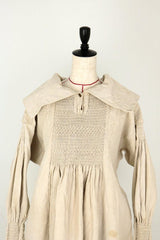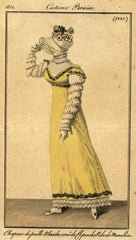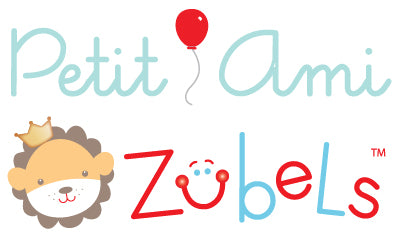
Smocking 101
As you may have seen, smocking is a technique that Petit Ami uses on many of our products. If you're anything like me, you probably don't know much about smocking. We think of smocking as a sweet adornment for children's clothing. However, it has much different origins. So let's take a little peak into the history, techniques, styles, and details of smocking!
History
Smocking might as well have been around since the beginning of time (that's how old it is). The first documentation of smocking was in 1175 BC with Elizabeth I! It was created in Europe and really became popular in the 1700s and 1800s.

Ambrosius Holbein wearing a smocked shirt in 1812
For hundreds of years hands have tirelessly smocked garments for practical and not so practical reasons. The term smocking comes from the name smock for a farmers work shirt. Smocked garments were originally created for laborers because they gave protection and flexibility. The excess of fabric allowed for cushion when carrying heavy items and flexibility when moving.


Farmers smocked work shirts from 1700s
Eventually, smocking was no longer used for laborers but was worn by the wealthy. It was considered labor intensive, time consuming, and expensive. Smocking started to be embroidered and look more like the traditional style that we see today.


1812 smocking at the neck of the gown
Technique
Smocking can either be done by hand or sewn with a pleating machine. Oh, how we love technology! When hand sewn, a dot grid is drawn on the fabric to create a guide for sewing. With the pleating machine, the fabric is grabbed, folded, and then punctured by the machines multiple needles.
Styles
- North American (aka lattice)
- English
- Counterchange
DIY
Looking for a new hobby? SMOCKING! Watch some instructional videos, read up, or even buy a smocking kit. Start small and simple with cotton fabrics because they won't pucker. Try the English style first since it separates the smocking and embroidery into two steps. You got this!
This timeless technique has been passed down from generation to generation for hundreds of years. Help Petit Ami carry on this tradition by grabbing a needle and thread or shopping our smocked garments!


